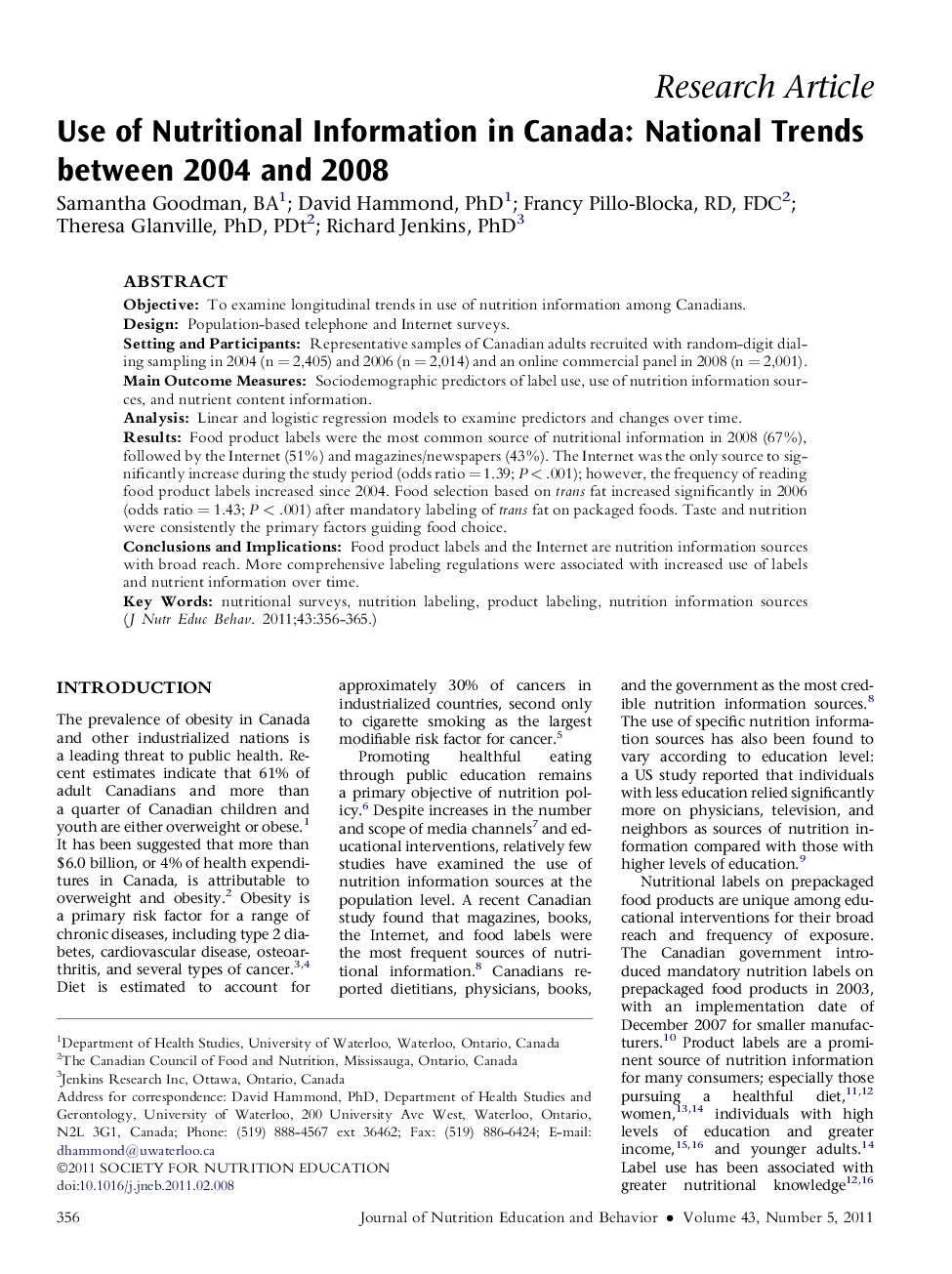| Article ID | Journal | Published Year | Pages | File Type |
|---|---|---|---|---|
| 362378 | Journal of Nutrition Education and Behavior | 2011 | 10 Pages |
ObjectiveTo examine longitudinal trends in use of nutrition information among Canadians.DesignPopulation-based telephone and Internet surveys.Setting and ParticipantsRepresentative samples of Canadian adults recruited with random-digit dialing sampling in 2004 (n = 2,405) and 2006 (n = 2,014) and an online commercial panel in 2008 (n = 2,001).Main Outcome MeasuresSociodemographic predictors of label use, use of nutrition information sources, and nutrient content information.AnalysisLinear and logistic regression models to examine predictors and changes over time.ResultsFood product labels were the most common source of nutritional information in 2008 (67%), followed by the Internet (51%) and magazines/newspapers (43%). The Internet was the only source to significantly increase during the study period (odds ratio = 1.39; P < .001); however, the frequency of reading food product labels increased since 2004. Food selection based on trans fat increased significantly in 2006 (odds ratio = 1.43; P < .001) after mandatory labeling of trans fat on packaged foods. Taste and nutrition were consistently the primary factors guiding food choice.Conclusions and ImplicationsFood product labels and the Internet are nutrition information sources with broad reach. More comprehensive labeling regulations were associated with increased use of labels and nutrient information over time.
